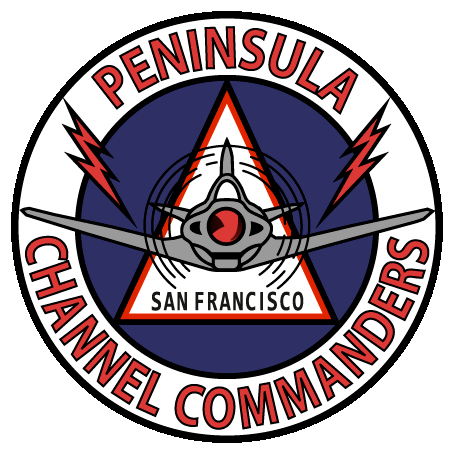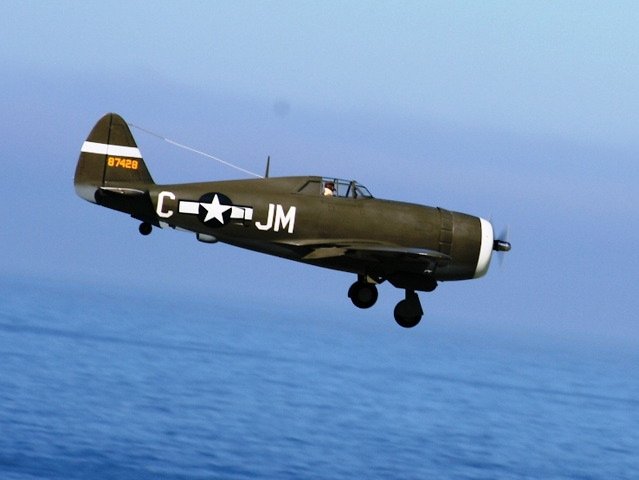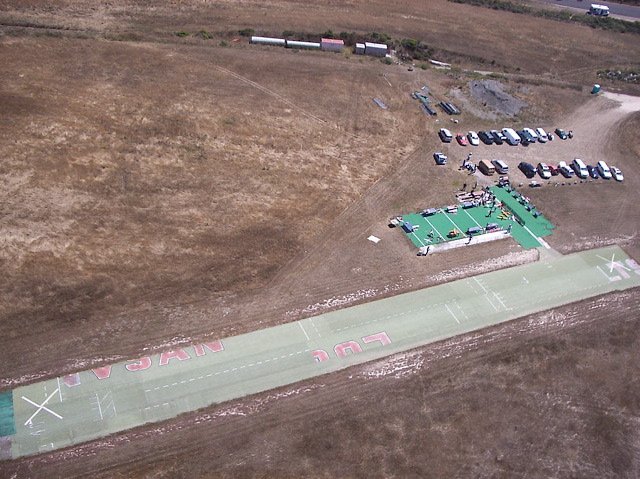Richardson Field is named in honor of Alonzo Richardson, a colorful PCC member who has been a keystone in the group since its earliest days. During World War II, Alonzo spent three years in Europe as Squadron Engineering Officer with the 451st Bomb Squadron. The field is dedicated to the 111 brave men lost from the squadron during the war.
While he was working on his article about Charlie Wajdak, Paul Lum asked Alonzo Richardson for help and recieived this wonderful email account of PCC days gone by.
First Impressions
"My first knowledge of the PCC was shortly after moving here and settling down in the Mills Estates. While taking the kids for a walk we found the PCC members flying from a hilltop near what is now 280.
The planes were escapement with the simplistic radios. If you got three flights with out a crack-up you were doing fine.
I asked a lot of questions and then built my own plane from a kit. The radios were not in a case, just a printed circuit board which you had to cover somehow. The batteries were snapped into a battery case. The transmitter was in a case and had only one push button for control.
Learning The Controls
You could get a Bonner escapement that had up, down, right,and left—one push on the button and held would give you right, two quick pushes and held gave you left, three and held gave up, and four got you down. A separate escapement could be set up to give you fast or slow for the engine.
We flew from that hilltop for a number of years and then moved to Foster City. We were chased to another location I believe four times before we finally had to leave Foster City. Our next field was in Alvers Dairy pasture in Half Moon Bay. We stayed there for over twenty years before run off by a housing project.
It was at Foster City that escapements gave way first to Galloping Ghost controls, which were often called nervous tail controls. Next came the channel controls. The ten-channel system would give you right and left rudder, left and right aileron control, up and down elevator, engine control, and usually a trim control on the elevator. You could use one control on the right and one on the left at the same time but not two on the same side. For example the elevator was on the left with elevator trim. You could trim the elevator but not change the elevator at the same time. Rudder was also on the left,which meant you could not use it at the same time the elevator was being used. All these controls were all or nothing. To give right rudder meant you got full right and it stayed there until you released the control at which time it would return to neutral. The engine and elevator trim were not self-centering servos.
The channel control system then was replaced with our present digital control systems. To us old timers, the present controls are just out of this world they are so good. Loss of control is a rare thing today whereas it was not uncommon with the earlier control systems.
Finding a Field
Charlie and Joe found the field and Ernie Alves said he wanted to see a flying demonstration before letting us use it. The pasture was full of cow hoof prints which would snag the wheels of a plane trying to take off or land. I had a Taurus plane and after finding a short clear space I told Mr. Alvers I would fly it but only once because I knew the landing gear would be torn off when landing. I did manage to get it into the air and put on a pretty good demonstration. The landing gear was torn off on landing.
Using our cars, we dragged an A frame with nails sticking down back and forth over the pasture until we had a useable strip to fly from. Our first improved strip was made from old corrugating machine belts. These are cotton belts a half inch thick and 85 inches wide. They are about 200 feet long and worked well until we were able to put asphalt down.
Andreni poured out a slurry that hardened for our first hard surface runway. We had begged him to do it before the first rain—well it had rained before he brought the dual wheeled truck out and began to pour. The double tired wheels sunk down about six to eight inches. These ruts were simply filled with the slurry. When the county was estimating the value of the runway they bored holes to measure the depth. I was careful to point out the places to test bore—where the ruts had been. They found we had ten inches of asphalt and paid us for it."
There are lots more stories about our past history.
Achieving Authenticity
Many of the members do not know we are a chartered AMA club. We are a registered non-profit corporation having a stateregistered corporation. In the event of a serious accident the club can be sued but not the officers. That is an important protection for the officers and should not be dropped.
The one thing I remember about Charlie is the fact that he flew a Delta wing plane with a souped-up engine. It was very fast and rolled just as fast. He flew it upside down about half the time. I could never tell which was the top or bottom of the plane.
Another thing few remember. When we first flew from Alvers pasture there was no road beyond the barn. We had to carry our gear from the barn to the field. When it rained the walk got to be a problem. One of the members that worked for a construction firm got enough 2x6 planks to build a wood walkway from the barn to the field. Later we could drive up a drain ditch to the field unless it was raining. When the big water tank was put in a road was graded and we used that. An electric fence was set up around the runway to keep the cow droppings off the runway. The supporting posts were set into pockets to permit laying the fence down when we flew.
Early Beginnings
When I first knew PCC it had only about 20 members and we met in a hobby shop in, I believe, San Bruno. We soon had a meeting place in a bank in Millbrae. I believe we next moved to the Rec Center in Millbrae and later to the present meeting place.
Our financial position remained touch and go until we established the field fund. Each new member was required to contribute $50 to that fund, which was to be used for field maintenance requirements only. That has been forgotten at times in the past and should not be forgotten again. We have substantial cash on hand now only because of the field fund. Establishing a new field takes a lot of money. We never know when we will have to find a new field—so hold onto that cash!




